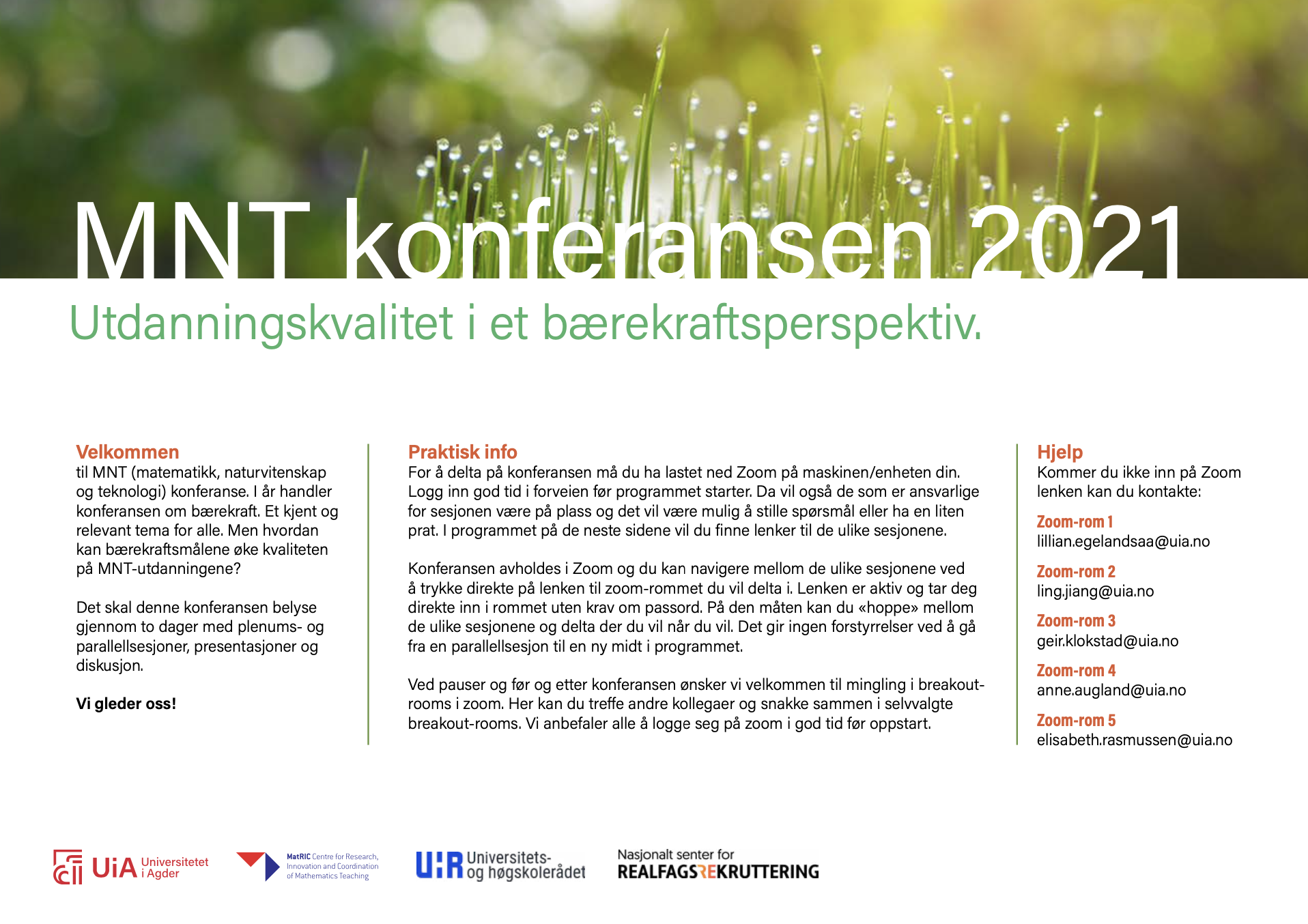Viktigheten av studentaktiv og praksisnær læring for utformingen av en matteknolog
DOI:
https://doi.org/10.5324/njsteme.v5i1.3939Sammendrag
Bachelorutdanningen i matteknologi ved NTNU utdanner kandidater som kan gå inn i en rekke ulike roller innen matindustri og forvaltning; eksempelvis innen kvalitetsarbeid og analyser, innovasjon og produktutvikling, matproduksjon og forskning. Matteknologen er en allrounder. Som et ledd i å optimalisere studentenes læring og øke gjennomstrømmingen, ønsket vi å finne ut mer om hvilke oppfatninger og forestillinger studentene har om studiet. Hva er viktig i studiet i utformingen av en matteknolog? Hvilke læringsaktiviteter opplevde de som nyttige i forhold til å forstå pensum bedre? Kan læringsaktiviteter med utgangspunkt fra arbeidslivet øke forståelsen av faglige tema? Dette er spørsmål som ble stilt til studenter fra 1., 4. og 6. semester under utdanning og uteksaminerte kandidater fra bachelorutdanningen. Undersøkelsen ble gjennomført med fokusgruppeintervjuer med påfølgende tematisk analyse av data. Studentenes holdninger og forventninger, samt studiets oppbygning, vurderingsmetoder og grad av studentaktiv læring kan påvirke læringsutbyttet i løpet av utdanningen. Ifølge studentenes egne erfaringer er de viktigste elementene i utformingen av en matteknolog innslag av forskjellige relevante og praksisnære studentaktiviteter. Spesielt fremheves den 5 måneders lange praksisperioden i 4. semester innen industri eller forskning som utfordrende og lærerik med tydelig relevans for arbeidslivet. Dette gir studentene et klart innblikk i hvilke jobber eller roller de kan ta etter utdanningen. Arbeid med reelle problemstillinger alene eller i grupper fremheves også som en type praktisk arbeid som studentene erfarer øker læringsutbyttet.
Downloads
Nedlastinger
Publisert
Utgave
Seksjon
Lisens
Opphavsrett 2021 Lisbeth Mehli, Anita N. Jakobsen, Rolf Jonas Persson, Ragnhild Lyngved Staberg

Dette verket er lisensiert under en Creative Commons Attribution 4.0 International Lisens.
The Nordic Journal of STEM Education licenses all content of the journal under a Creative Commons Attribution (CC-BY) licence. This means, among other things, that anyone is free to copy and distribute the content, as long as they give proper credit to the author(s) and the journal. For further information, see Creative Commons website for human readable or lawyer readable versions.
Authors who publish with this journal agree to the following terms:
1. Authors retain copyright and grant the journal right of first publication with the work simultaneously licensed under a Creative Commons Attribution License that allows others to share the work with an acknowledgement of the work's authorship and initial publication in this journal.
2. Authors are able to enter into separate, additional contractual arrangements for the non-exclusive distribution of the journal's published version of the work (e.g., post it to an institutional repository or publish it in a book), with an acknowledgement of its initial publication in this journal.
3. Authors are permitted and encouraged to post their work online (e.g., in institutional repositories or on their website) prior to and during the submission process, as it can lead to productive exchanges, as well as earlier and greater citation of published work (See The Effect of Open Access

